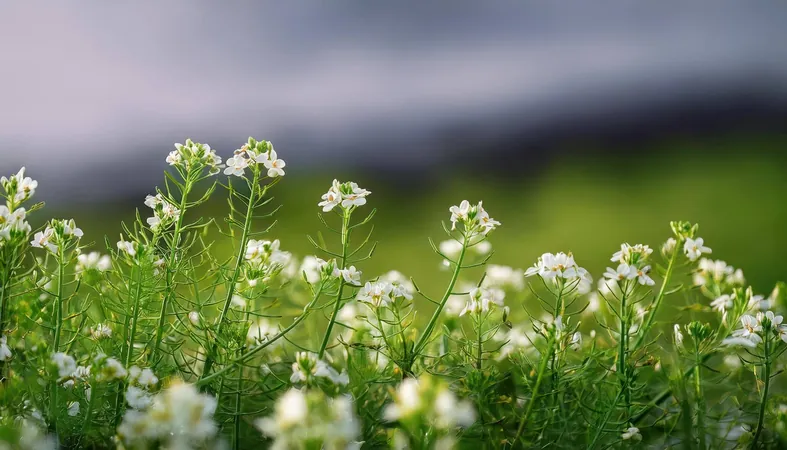
Revolutionizing Plant Biology: The Groundbreaking Atlas of the Arabidopsis Life Cycle
2025-08-28
Author: Yu
Unlocking the Secrets of Plant Life
Did you know that our understanding of plants hinges on a tiny, unassuming weed called Arabidopsis thaliana, or thale cress? For over 50 years, this little flower has served as the backbone of plant biology, revealing secrets about how plants respond to light, hormones, and environmental conditions. Yet, despite its pivotal role in research, many aspects of its life cycle have perplexed scientists for years.
Introducing the Revolutionary Atlas
A team of innovative researchers at the Salk Institute has made a monumental leap in plant science by unveiling the first comprehensive genetic atlas of the Arabidopsis life cycle. Harnessing cutting-edge techniques like single-cell and spatial transcriptomics, they analyzed gene expression across 400,000 cells, starting from a mere seed all the way to a mature plant. This groundbreaking resource promises to be a game-changer for those studying plant development and responses to various stresses.
Cutting-Edge Technology at Work
Published on August 19, 2025, in Nature Plants, this revolutionary study is set to propel advancements in biotechnology, agriculture, and environmental science. Senior author Joseph Ecker, a leading figure in genetics, emphasizes that previously, a technological barrier hindered comprehensive gene mapping across different developmental stages. This new atlas bridges that gap.
Unveiling an Intricate World of Cell Types
Arabidopsis thaliana has been a feature in countless scientific studies, allowing researchers to decode its complex genome and map which genes are active in various parts of the plant. The innovative approach combines single-cell RNA sequencing—which reveals gene activity by examining RNA transcripts—with spatial transcriptomics, allowing scientists to evaluate gene activity without losing the plant's structural context. This merging of technologies presents an unparalleled view of plant identity across various tissues.
Exciting Discoveries Await
Co-first author Natanella Illouz-Eliaz expressed her excitement, stating, "This work allows us to witness gene activity like never before. We’re already making discoveries—like identifying genes crucial for seedpod development that were previously unknown. The potentials for new findings in such rich data are truly exhilarating." The atlas encompasses ten stages of development, showcasing the staggering diversity of cell types within one plant.
Charting a New Path in Plant Science
By capturing the entire life cycle instead of a mere snapshot, researchers have mapped a dynamic network of cells influencing plant growth. This comprehensive approach has unveiled numerous previously unrecognized genes, paving the way for deeper investigations into their specific roles.
Accessible Knowledge for All
Co-first author Travis Lee hailed the new atlas as a seminal tool for generating new hypotheses in plant biology. The user-friendly web application provides immediate access to this treasure trove of information, enabling scientists to dive into the rich data and embark on new genomic studies.
A Collaborative Effort
This monumental work was supported by various prestigious institutions, including the Human Frontiers Science Program and the National Institutes of Health, underscoring the collaborative spirit driving scientific discovery. With this atlas now available to the public, researchers are eager to explore its depths and uncover the mysteries of plant biology.



 Brasil (PT)
Brasil (PT)
 Canada (EN)
Canada (EN)
 Chile (ES)
Chile (ES)
 Česko (CS)
Česko (CS)
 대한민국 (KO)
대한민국 (KO)
 España (ES)
España (ES)
 France (FR)
France (FR)
 Hong Kong (EN)
Hong Kong (EN)
 Italia (IT)
Italia (IT)
 日本 (JA)
日本 (JA)
 Magyarország (HU)
Magyarország (HU)
 Norge (NO)
Norge (NO)
 Polska (PL)
Polska (PL)
 Schweiz (DE)
Schweiz (DE)
 Singapore (EN)
Singapore (EN)
 Sverige (SV)
Sverige (SV)
 Suomi (FI)
Suomi (FI)
 Türkiye (TR)
Türkiye (TR)
 الإمارات العربية المتحدة (AR)
الإمارات العربية المتحدة (AR)